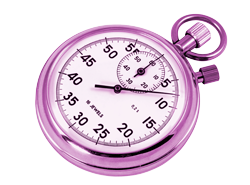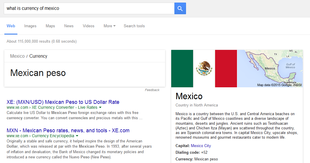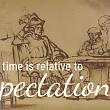web hosting
for reliable websiteHow to Reduce Bouncing and Pogo Sticking
Your website has a decent amount of visitors, but the majority of them is just peeking for a few seconds and leaving without reading anything in the pages. This indicates high bounce rate and, possibly, pogo sticking.
In this article, we take a closer look at the meaning of bouncing and pogo sticking, how they differ from each other and what are the most typical reasons for shifty user behavior. After defining the bounce rate and pogo sticking, we will also describe how to reduce bouncing and to guide users towards longer clicks – make them read your content for a while and browse more pages during their visits.
Bouncing and Sticking mostly depend on:
Let’s take a look at some important definitions before we immerse ourselves in reduction of bouncing and pogo sticking.
What is Bounce Rate
Time Doesn’t Matter Much Surprisingly, definitions of bounce do not specify how short or long the visit should be to consider it a bounce. For example, see Wikipedia definition here. However, the maximum time on page is mostly limited by user session timeout in statistics software, like Google Analytics.
Difference Between Short Bounce and Long Bounce
No matter how you look, short bounces aren’t good for website search rankings It is a completely different story, if user opens a page with 2,500 words, reads it for 12 minutes and leaves without clicking any other links after reading the full story. Such a long time spent on the page indicates that visitors found the page very interesting, since they stayed and read it for a long time. The fact that they left after reading the page without clicking any other links rather points to the problem in site’s overall navigation or lack of links at the end of the page.
Bounce Time Depends on Questions You Answer | ||
If users search with questions that have truly short answers, then the bounce rate may be higher than for more analytical topics. For example, the answers to the questions „What is the currency of Mexico?” or „What is the capital of Portugal?” are so brief that it is totally possible to get them in less than 10 seconds. Such short bounces are not always bad because users search, find answers and are happy with it. Other examples of precise questions and short answers category are dictionaries and Wikipedia-type pages.
What is Pogo Sticking?
Differences Between Bounce and Pogo Sticking
Understanding Google Goals
Pages with high bounce rate result in a lot pogo sticking rise. Low quality pages are not aligning with search engine goals. Although the content quality of a particular page is good, it may just not be suitable to list it for the particular search term. For assigning search ranking to each page, search algorithms are relying more on users’ behavior nowadays.
Brief summary:
Dancing Back and Forth | ||
Those webmasters who follow their website rankings closely in search engine results, have noticed that Google tests new pages’ quality by raising them higher for a few days. This is needed for letting searchers to click on those page links in search engine results and measuring for how long they stay on the page. If visitors are bouncing back fast and pogo sticking a lot, the website will not stay in high position, but will be getting lower ranking.
This kind of “Google Dance” of moving page forth and back in search results is part of determining the right position with particular search phrase. Since user satisfaction has a high weight on overall rating, getting people to click a website link is the only way to determine its true quality by Google.
When Google Dance Happens
Outdated Definition of Google Dance
Regardless of changed inner reasons of dance, the term itself is perfectly describing the links movement back and forth in Google search results and remains a powerful metaphor to this day.
Top 5 Reasons for Bouncing and Pogo Sticking
Bouncing and Pogo Sticking are Just Symptoms
No, Length of Meta Description doesn’t Help You
Many webmasters who followed widely known SEO formulas had false sense of security and thought that having proper title tags and inbound links with proper anchors was enough. This is not the case today. There was so much sneaking and hustling with both technical elements in page and inbound links, that their weight has been greatly reduced today. The good news is that the change leaves more room for quality content.
Think About User Intentions and Needs
In creating page content, you should exercise some empathy and think what is important for your visitors. Tailor your solutions, so that they fit better with visitors’ needs:
Finding the right tone and angle may be difficult at the beginning. Once you discover the right niche and open up for dialogue, you will start seeing more details and be able to offer better content on your website.
Why There Is Less Visual Design
Mobile Websites Are Even Less Designed
| ||
Modern design is rather clean and straightforward. You should avoid design styles, which plague your website. Old-school examples are drop shadows behind texts, using cheap fonts, bevel and emboss, cheesy stock photos, to name just a few of them. If you haven’t designed at least 100 websites before, don’t do it yourself. Better hire a professional designer and you will save some time for other things you need to do, and you will get a good modern design without any hassle.
Simplify Site Structure and Navigation
5 Simple Questions about Link Structure
If you have answered all these four questions, then the fifth will be “Why do you need all this other stuff there?” and you may basically clean up all unnecessary links, which have lower priority. Believe it, you will have much cleaner picture afterwards. Most importantly, you will have much simpler site navigation and users are more likely to remain focused and click on links you left there.
Get Descent Web Hosting for Your Website
The main idea was that slow time on first byte indicates mostly cheaper web hosting servers, with sluggish maintenance, higher risk of slow hard drives, junked virtual memory, and overloaded RAM usage or network bottlenecks.
On the other hand, there isn’t a direct connection between search positions and time spent downloading a page. This was, perhaps, because users find copious content more useful and are willing to wait a little longer to see it.
Optimize Site Scripts and Output Code
It is very easy to see how Google crawler measures your website downloading speed under Crawling Stats in Google Webmaster Tools Console. Reducing page size, time until first byte as well as page download time are important quality parameters, which help Google to save their resources and give you a slight boost in search rankings.
Users Love Fast Websites
Most users like faster sites. Statistics show that users prefer websites with page download time less than 0,4 seconds – they stay there for longer, browse more pages and, more likely, share links in social media. | ||
 H4W
H4W
 Bounce rate is a percentage of users entering a website and leaving without opening more than one page. Being one of the most important effectiveness measures, bounce rate indicates the quality of a website – how the website satisfies visitors and attracts them to browse more than one page during their visit.
Bounce rate is a percentage of users entering a website and leaving without opening more than one page. Being one of the most important effectiveness measures, bounce rate indicates the quality of a website – how the website satisfies visitors and attracts them to browse more than one page during their visit.




